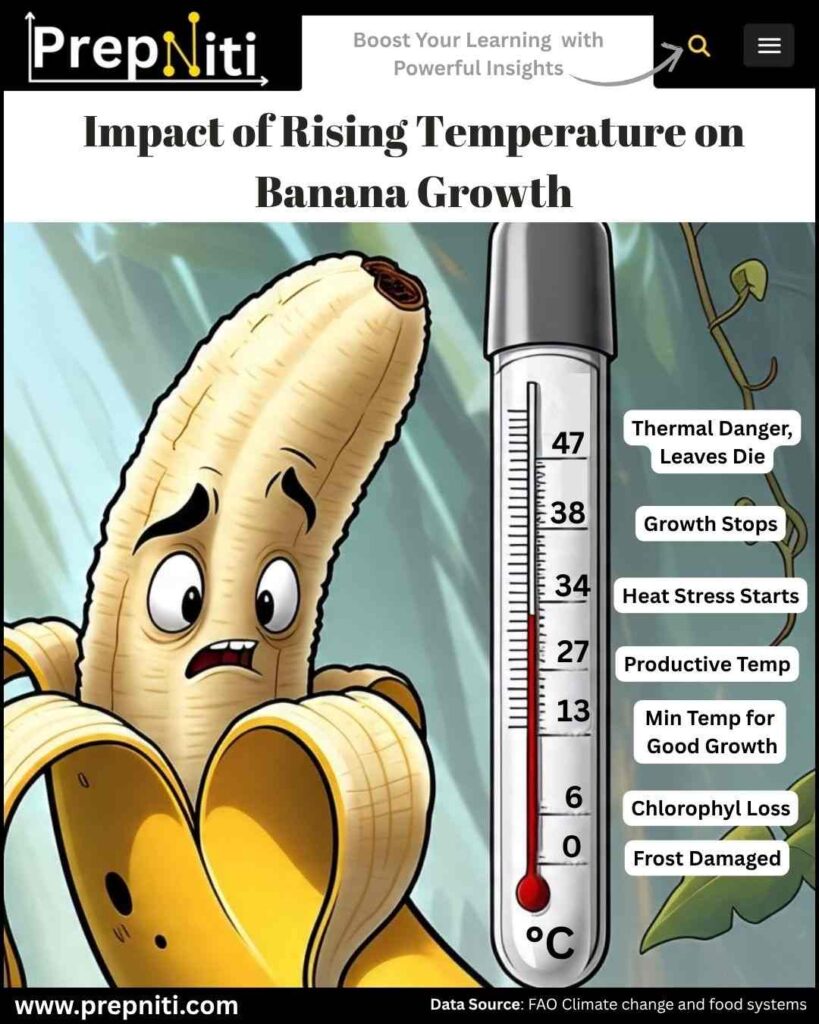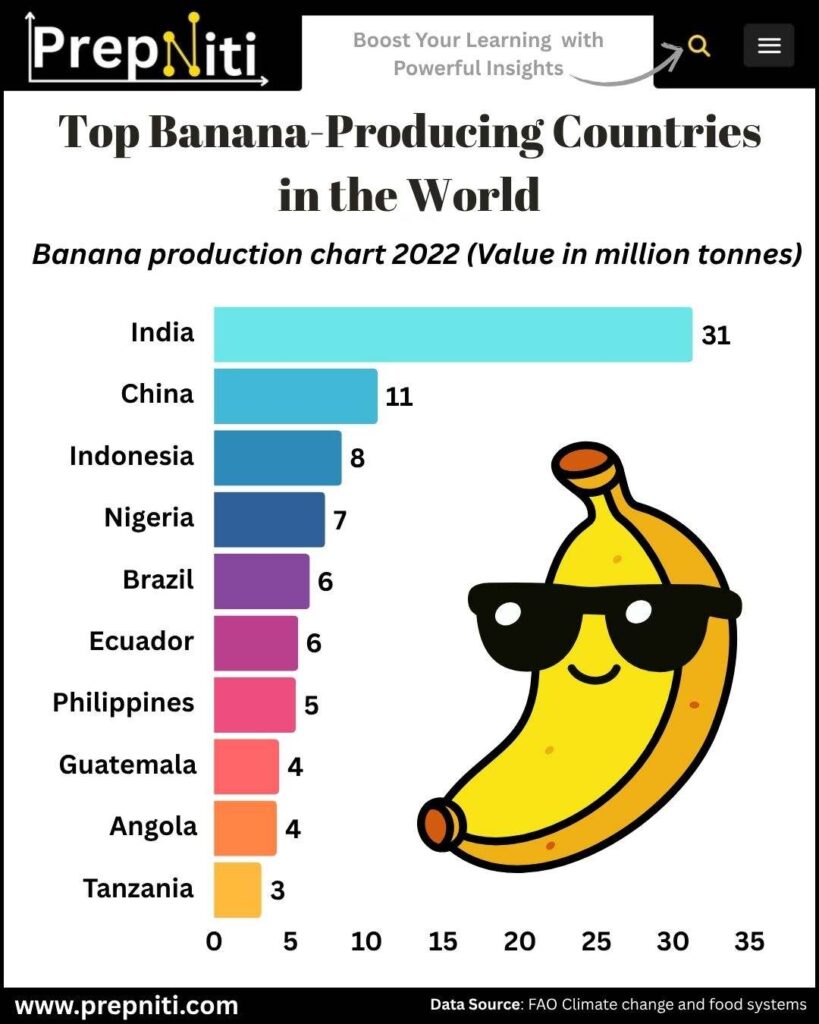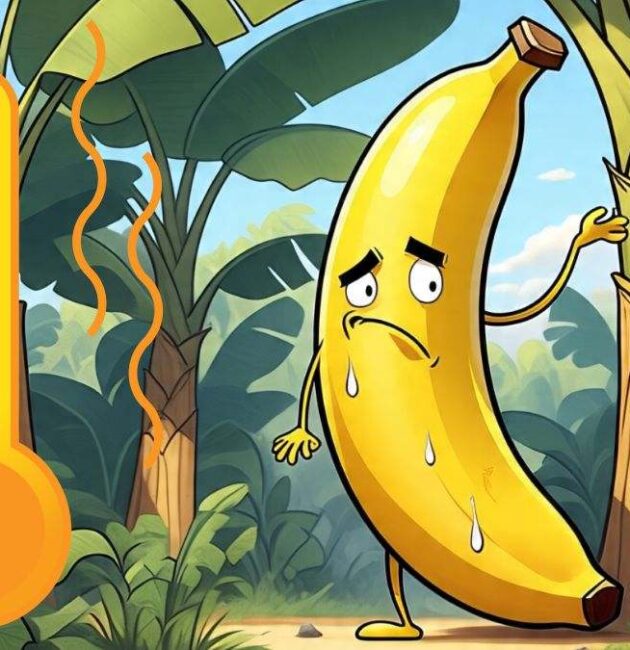Heat stress from climate change is affecting more than just glaciers and drought conditions—it’s now threatening one of the world’s most consumed fruits. A recent study by Christian Aid, a global anti-poverty organization, reveals that banana production and exports will be severely impacted in major producing countries including India, Brazil, and Indonesia.
Banana Cultivation Requirements
- Bananas thrive in temperatures between 15-35°C
- Optimal humidity levels range from 75-85%
- Ideal growing conditions exist between 30° North and South of the equator
- Plants prefer lower elevations, with specialized varieties needed for higher regions
- Temperatures below 12°C can cause chilling damage
- Plant growth halts above 38°C
- Strong winds exceeding 80km/hr damage leaves, reducing photosynthesis capability
- Despite heat tolerance, bananas are highly sensitive to water shortages

Global Production Leaders
India leads global banana production with an impressive 31.30 million tonnes in 2022, significantly ahead of second-place China’s 10.70 million tonnes.
- Indonesia: 8.35 million tonnes
- Nigeria: 7.26 million tonnes
- Brazil: 6.26 million tonnes
- Ecuador: 5.53 million tonnes
- Philippines: 5.35 million tonnes
- Guatemala: 4.25 million tonnes
- Angola: 4.17 million tonnes
- Tanzania: 3.18 million tonnes
Together, these ten countries produced 86.45 million tonnes of bananas—equivalent to the mass of 850,000 blue whales, 8,500 Eiffel Towers, or 3,500 Statues of Liberty.

Climate Change Impacts on Banana Production
Banana production has declined in recent years, attributed conditionally to:
- Extreme weather events including droughts, floods, and storms
- Increasing difficulties with pests and plant diseases
Research indicates that soil and socioeconomic factors play crucial roles in the resilience of banana production to climate change. Rising temperatures combined with labor and export infrastructure requirements are projected to cause:
- 60% reduction in suitable areas for export banana production
- Yield declines in most current producing areas within Latin America and the Caribbean—a region responsible for approximately 80% of global banana exports
By 2050, major producers like India and Brazil are expected to experience declining yields due to climate change, with key exporters like Colombia and Costa Rica also affected.
Mitigation Recommendations
To limit existing climate damage to banana-growing regions and protect both diets and livelihoods dependent on this crop, the study recommends:
- Rich countries must set ambitious climate mitigation targets aligned with the Paris Agreement
- Global warming should be limited to 1.5°C above pre-industrial levels
- Countries should use the 2025 submission of updated ‘Nationally Determined Contributions’ as an opportunity to demonstrate fair emission reduction plans




